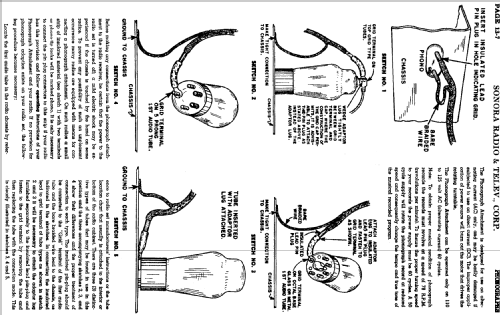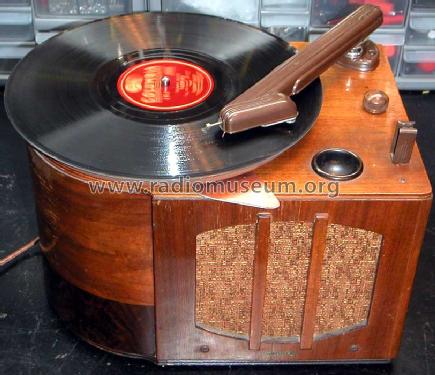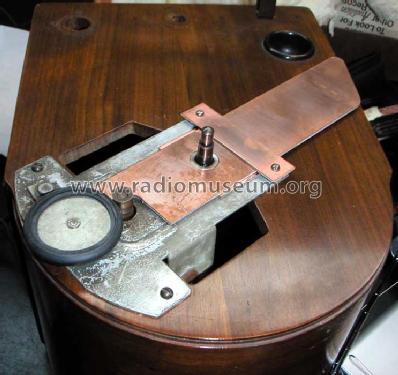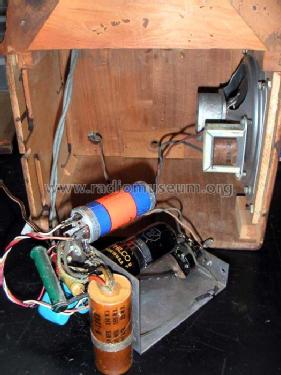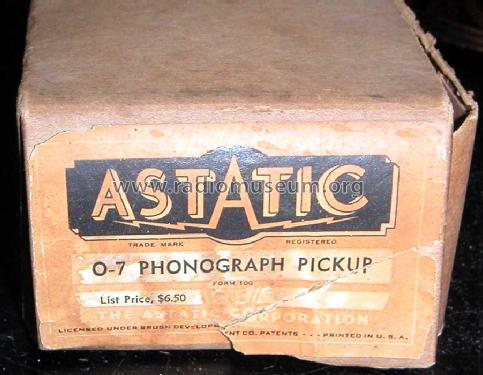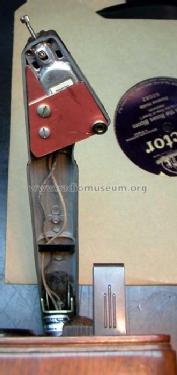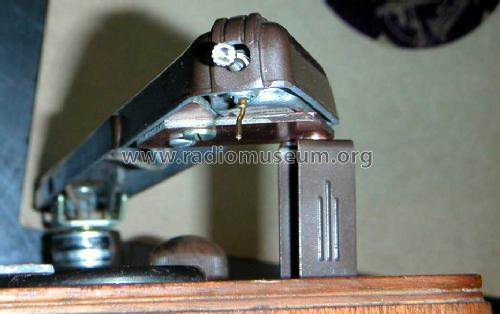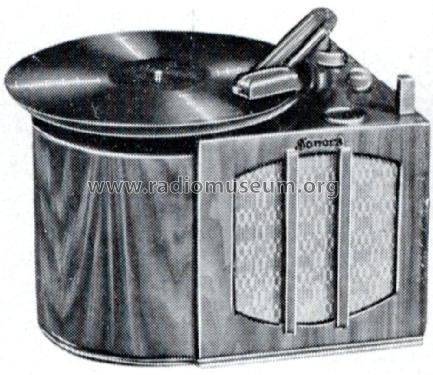TE-38 Duet
Sonora Radio & Telev. Corp.; Chicago (IL)
- Produttore / Marca
- Sonora Radio & Telev. Corp.; Chicago (IL)
- Anno
- 1939/1940
- Categoria
- Registratore audio/video e/o riproduttore
- Radiomuseum.org ID
- 58361
-
- alternative name: Sonora Electric Phono
Clicca sulla miniatura dello schema per richiederlo come documento gratuito.
- Numero di tubi
- 1
- Valvole
- 70L7GT
- Gamme d'onda
- - senza
- Particolarità
- Giradischi+AmplifBF+Altoparlant
- Tensioni di funzionamento
- Alimentazione a corrente alternata (CA) / 115 Volt
- Altoparlante
- AP magnetodinamico (magnete permanente e bobina mobile) / Ø 5.5 inch = 14 cm
- Materiali
- Mobile in legno
- Radiomuseum.org
- Modello: TE-38 Duet - Sonora Radio & Telev. Corp.;
- Forma
- Soprammobile con qualsiasi forma (non saputo).
- Dimensioni (LxAxP)
- 12.25 x 9.125 x 7.5 inch / 311 x 232 x 191 mm
- Annotazioni
-
Resistance line cord (320 ohm)
- Fonte esterna dei dati
- Ernst Erb
- Riferimenti schemi
- Rider's Perpetual, Volume 13 = 1942 and before
- Letteratura / Schemi (3)
- -- Original prospect or advert (The Sonora Folder for 1940.)
- Altri modelli
-
In questo link sono elencati 338 modelli, di cui 206 con immagini e 253 con schemi.
Elenco delle radio e altri apparecchi della Sonora Radio & Telev. Corp.; Chicago (IL)
Discussioni nel forum su questo modello: Sonora Radio & Telev: TE-38 Duet
Argomenti: 1 | Articoli: 1
It would be nice to replace a 70L7 with a 117V version to eliminate the need for power cord resistor, but when I was looking for a 117V plugin replacement for the 70L7 I found that there was no replacement with the same pinout, and that the 70L7 puts out twice as much power as the 117L7, with the same 110V Bplus.
This is because the 117L7 has a set of curves that works better with a higher impedance and a higher B+. It would be voltage starved in this application. A higher B+ and higher load impedance in the output ransfomer load line shown below, would have increased the possible p-p swing.
The squarer, more tetrode-like set of curves of the 70L7 can fit the lower 2k impedance load line and double the current swing cleanly.
The distinguishing feature of low voltage power pentodes is that they have a lower voltage knee to give more headroom for a wider current swing.
Taking a look at 6L6 high voltage pentode vs 50C5 low voltage pentode confirms this.
In series heater power pentodes, a different heater voltage may mean also a different curve family.
Comments invited,
-Joe Sousa
Joe Sousa, 26.Oct.08



